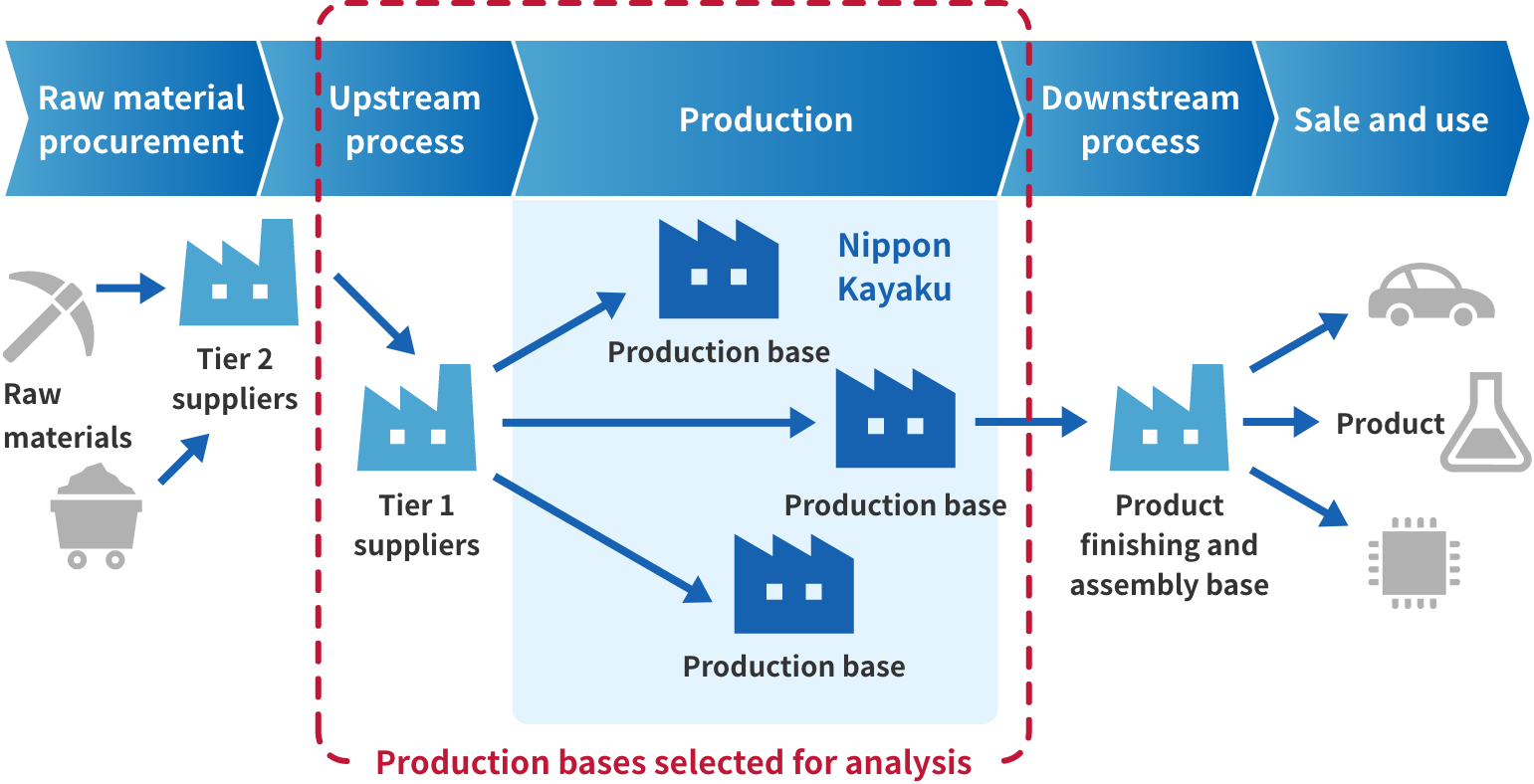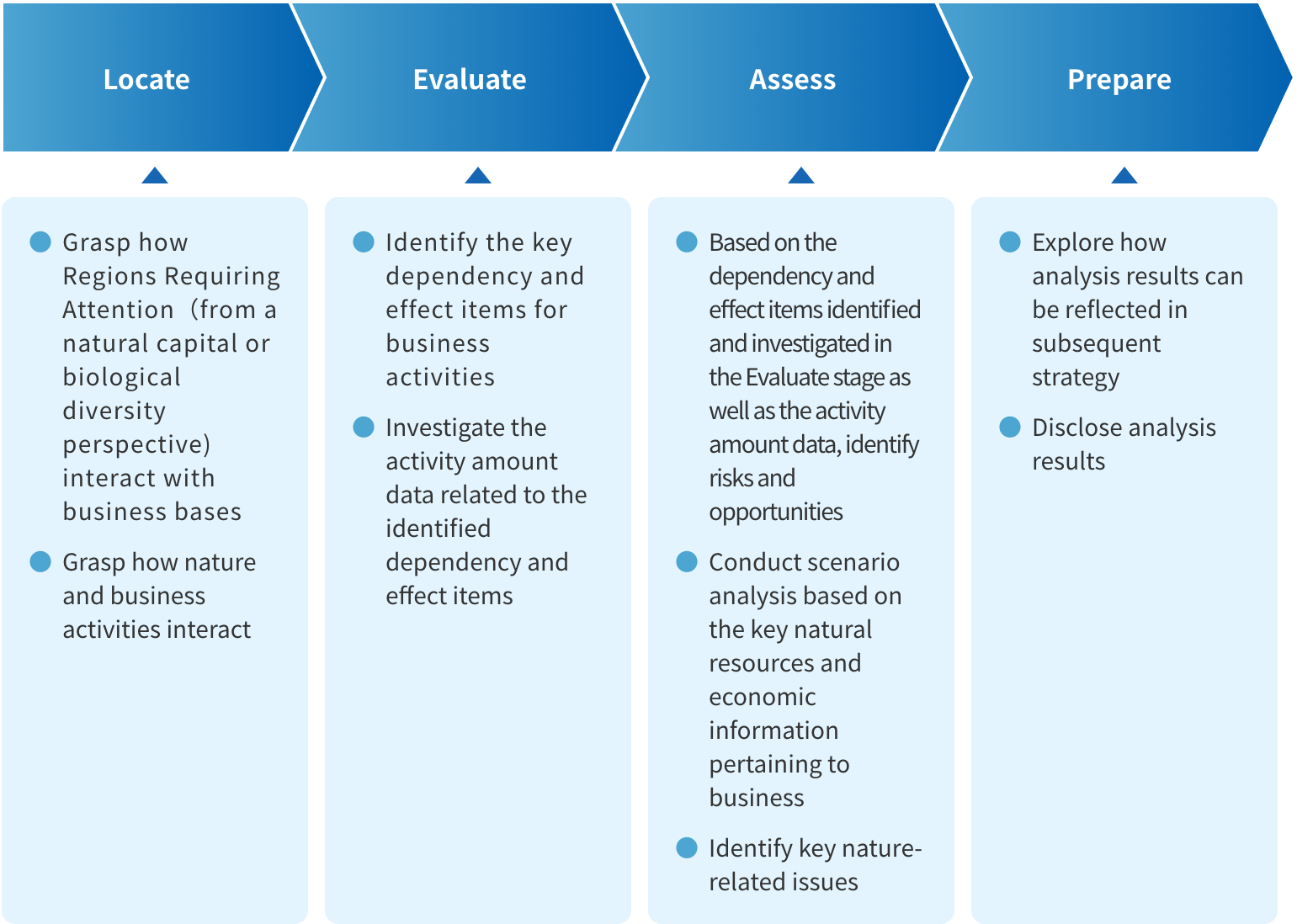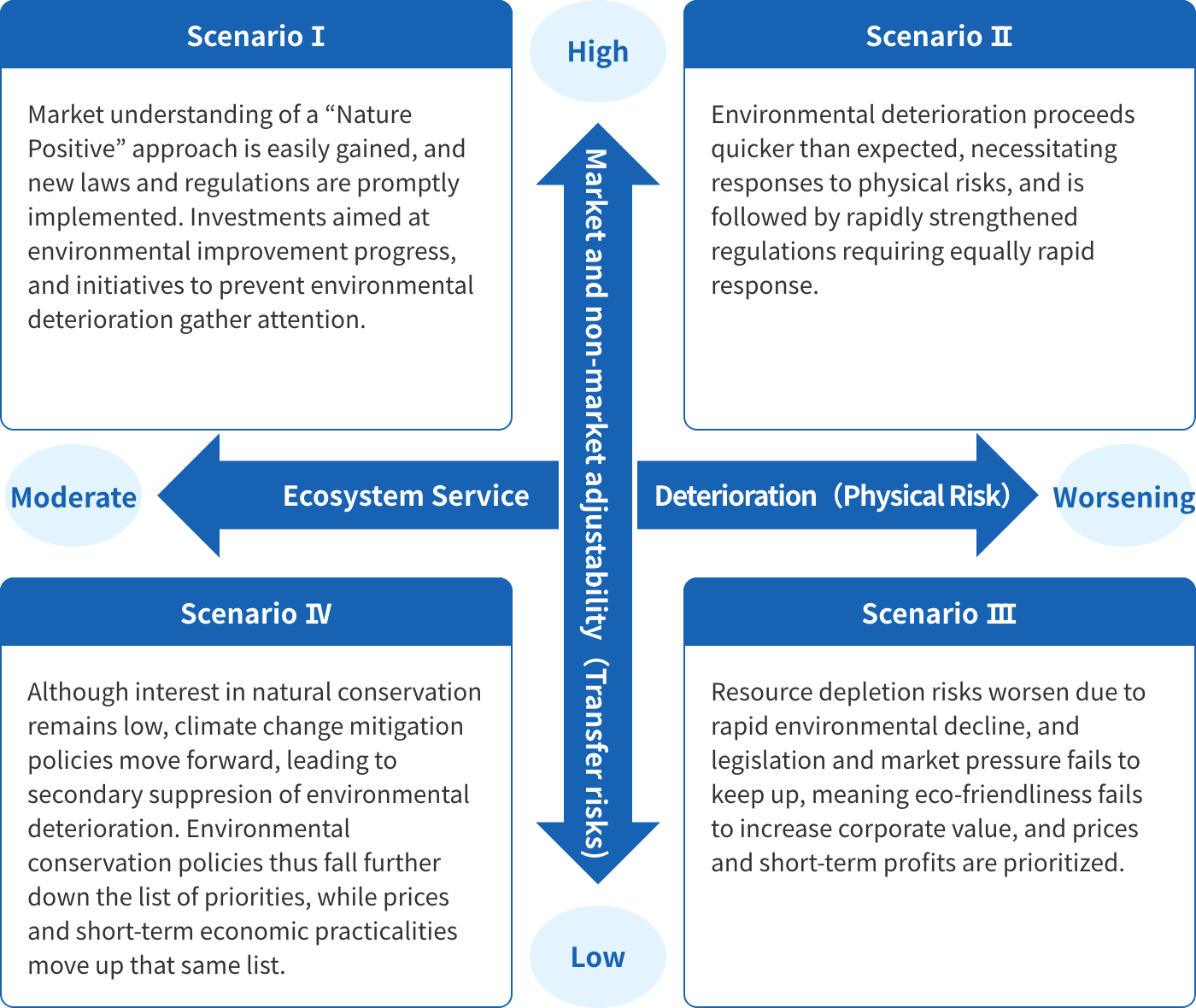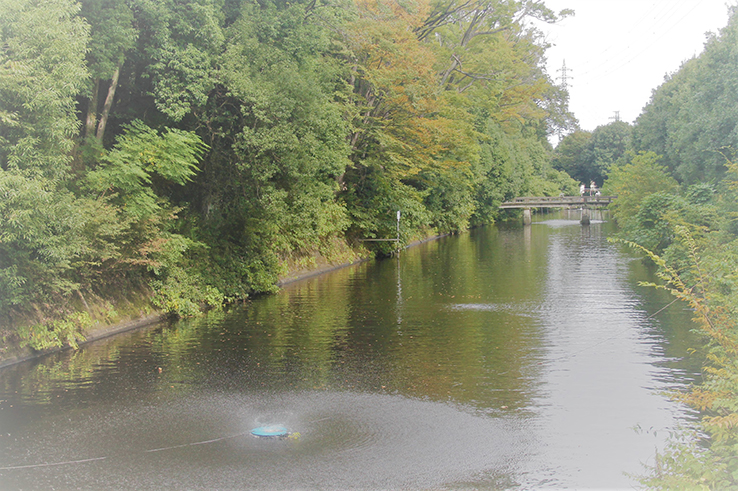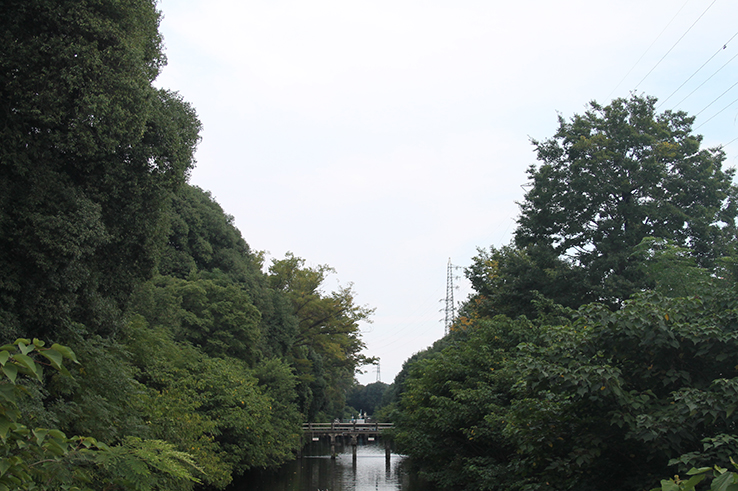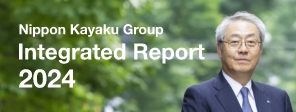In addition to climate change mitigation, the environmental aspects of our Group’s sustainability issues include “Reductions in Waste and Wastewater” and “More Efficient Use of Water Resources,” showing how sustainable use of natural capital occupies a prominent position in our Key Sustainability Issues. These issues are managed under a similar promotion and audit system to that surrounding our climate change mitigation measures.
Our Sustainable Management Meeting, chaired by our President, considers our natural-capital-related initiatives pertaining to, for example, use of water resources, waste and pollutants. It discusses these initiatives in tandem with climate change mitigation measures as part of business planning, coordinating and evaluating current activity status. The results of such discussions are reported to the Board of Directors, which performs the Audit and Supervisory functions for this particular system.
Furthermore, one of the Sustainable Management Meeting’s advisory committees, the Environment, Safety, Quality Management Committee (chaired by the Director In-charge of the Technology Unit), coordinates all environmentally-related policies including those pertaining to climate change mitigation. By taking a cross-cutting perspective on Group matters, this committee helps deepen discussion over issues concerning natural capital and biodiversity.
While driving forward our nature-related initiatives, we believe it important to consider our links with stakeholders and the local communities surrounding our operation sites. We have therefore installed respect for human rights as the foundation of sustainable management under our Nippon Kayaku Group Human Rights Policy–based on international human rights standards–and are carrying out this commitment across all business activities.
We require all suppliers (business partners) to observe our human rights policies and, out of consideration for the safety and health of local residents, also conduct human rights impact assessments which include anti-pollution and water stress elements. We therefore plan how to avoid or reduce risk in line with international standards.
We have additionally fixed a Sustainable Mineral Procurement Policy to govern our purchases of mineral resources. Avoiding raw material purchases from conflict zones and high-risk regions allows us to also avoid complicity in human rights violations, environmental destruction and dishonest practices. We require that our suppliers attend our Sustainable Procurement Guidebook seminars and sign a related consent form. We have also carried out a Sustainable Procurement Survey aimed at both suppliers comprising the top 90% of our purchases and all new suppliers. Step-by-step are we advancing our human rights system for all regional stakeholders involved in our business, including indigenous peoples, and looking to expand the scope of our human rights due diligence going forward.
For details on our human rights due diligence, please see here. For details on Sustainable Procurement, please see here.


